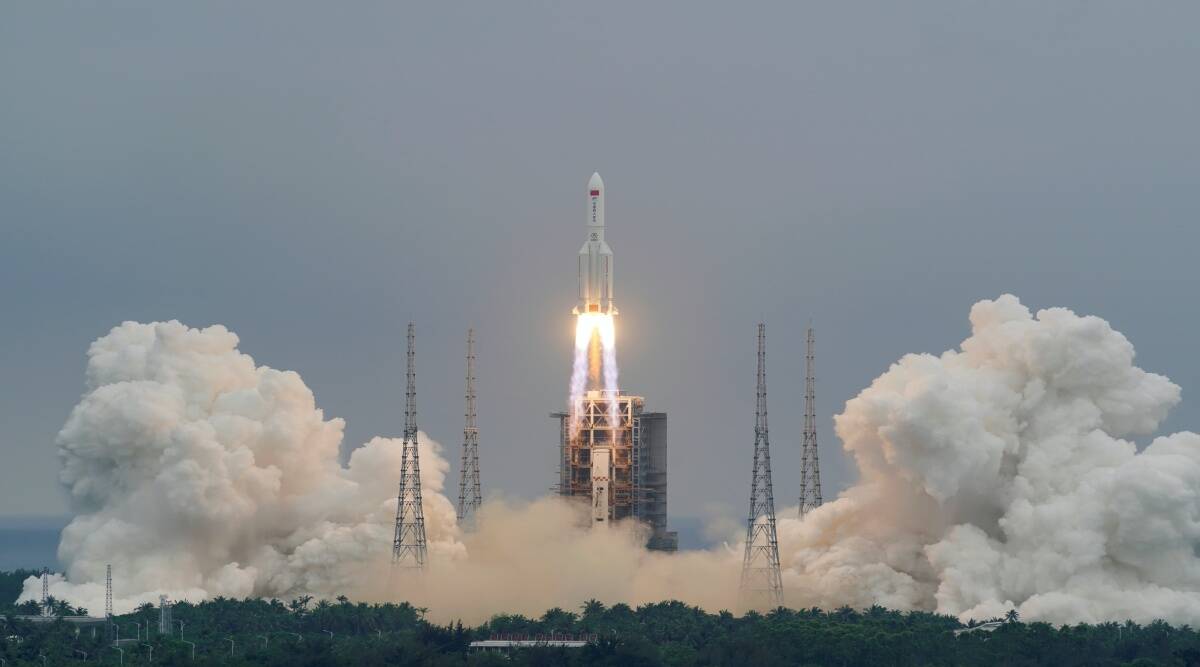China to launch its Long March 5B rocket to complete Tiangong space station

China rolled out its Long March 5B rocket on Tuesday in anticipation of its upcoming liftoff to place the third and final piece of the Tiangong space station in orbit. It’s all very exciting, but an out-of-control core module will likely result, as was the case on three previous occasions.
The heavy-lift rocket was transported to the pad on Tuesday, carrying a 23-ton lab module named Mengtian (which translates to “dreaming of heavens”). It took about three hours for the Long March 5B to make the nearly 2 mile (3 kilometer) journey at the Wenchang Spacecraft Launch Site, according to China National Space Administration (CNSA).
At the pad, the rocket will undergo final checks and fueling in preparation for its launch. The space agency has not confirmed the exact date for launch, but previous statements suggest the rocket will take off on Monday, October 31, according to Space.com.
Mengtian will join its sister modules Wentian and Tianhe to form the T-shaped structure of China’s three-module space station named Tiangong (meaning “heavenly place”). China’s space agency will use the Mengtian lab to conduct various microgravity experiments related to fluid physics, combustion science, and space technology, according to China’s state-run Xinhua. Unlike Tianhe, Mengtian does not include living quarters for astronauts.
Tiangong is China’s answer to the International Space Station and is scheduled to be fully constructed by the end of the year. The first module of the space station, Tianhe, launched to orbit in April 2021, while Wentian followed more than a year later in July 2022.
In June, China sent a crew of three astronauts to the space station where they’ve spent the past several months overseeing the docking of the two modules, in addition to setting them up and running tests. The crew is expected to return to Earth in December, after which point the Shenzhou-15 crew will take over.
Similar to previous launches of China’s Long March 5B , the core stage is expected to perform an uncontrolled reentry through Earth’s atmosphere upon its return. Astronomer Jonathan McDowell from the Harvard-Smithsonian Center for Astrophysics is “95% certain we will be in exactly the same situation again,” he told Gizmodo in an email.
The Long March 5B is notorious for jeopardizing populated areas as it falls back to Earth in a haphazard state. Previous incidents have taken place in 2020 and 2021 in which debris from the 100-foot-long (30-meter) core stage crashed along the western coast of Africa and the Indian Ocean. This past August, debris from the Long March 5B fell across regions in northern Borneo. Mercifully, no one has been hurt, but that doesn’t mean it can’t happen.
China is making huge inroads in space, but its space agency continues to be reckless when it comes to its rockets. Rockets are often built with mechanisms to control their reentry to isolated areas, or slow them down as they make their way back to Earth. If China plans on sending more of its heavy-lift rockets to orbit, it needs to start better equipping them for the ride back. yahoo.com
